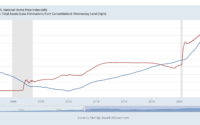Qatar Central Bank among largest global buyers of gold – Doha News
Gold is still regarded as the most reliable safe asset during times of unrest or uncertainty, despite the emergence of cryptocurrencies like bitcoin.
Central banks from around the world have been building up their gold holdings at a rate that was last seen 55 years ago, when the US dollar was still pegged to gold.
The World Gold Council (WGC) reports that in the third quarter of 2022, central banks purchased a record 399 tonnes of gold for about $20 billion, returning global demand for the precious metal to pre-pandemic levels, with Qatar Central Bank being among the largest buyers.
According to the WGC’s most recent quarterly report, retail demand from jewellers and buyers of gold bars and coins was also very strong.
Global gold demand increased by 28% Y/Y to 1,181 tonnes in the third quarter. The central banks of Turkey, Uzbekistan, Qatar, and India were among the biggest buyers, according to WGC, although other central banks also bought a sizeable amount of gold but did not publicly report their purchases.
The Central Bank of Turkey, which increased its total gold reserves to 489 tonnes in the third quarter, continued to be the biggest buyer of gold this year according to reports.
The the Reserve Bank of India added 17 tonnes during the quarter, bringing its total gold holdings to 785 tonnes. The Central Bank of Uzbekistan purchased another 26 tonnes.
An increase of more than 300% year over year was seen in retail purchases of gold bars and coins in Turkey, reaching 46.8 tonnes in the quarter.
Given that gold is still regarded as the most reliable safe asset during times of unrest or uncertainty, despite the emergence of cryptocurrencies like bitcoin, these developments are not particularly surprising.
Gold is also thought to be a good hedge against inflation, but experts argue that this is only true over very long time horizons – decades or even centuries.
Exchange traded funds (ETFs), which store bullion for investors, became net sellers as a result of rising interest rates, which unfortunately disrupted the advantages for the buyers.
The third quarter saw an 8% decline in gold prices as ETFs sold off their bullion holdings in opposition to central banks’ purchases. In times of rising interest rates, investors frequently switch their holdings from gold to assets that pay a higher yield.
The price of gold and other commodities has not been aided by an overly strong dollar. Nearly 20% below their March peak of $2,050 per ounce, gold prices are down 9.3% YTD.
[ad_2]
Source link


